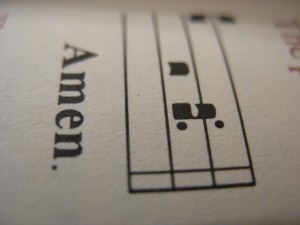The Bishops’ Conference has issued a Statement on the use of Mass Settings using the old translation of the Missal or settings which paraphrase the text.
Unlike some other countries which did not permit the use of previous settings as soon as the Missal was introduced the bishops did recognise that time was may be needed for settings to become available and for parishes and communities to find settings which suited their resources.
For many the starting point were the chants in the Missal itself which were freely available and could be simply sung without any accompaniment. This remains a primary option for parishes and communities. One of the hoped for benefits of using the Missal chants was to provide a common setting which Catholics would know wherever Mass was celebrated in English.
It was permitted to start singing the new translation at Mass from Easter 2011 – since then a large number of Mass settings have been published. In England and Wales, as is required in other countries as well, Mass settings are approved prior for publication for their fidelity to the text. Details of the process can be found here and a list of published settings here.
The Liturgy Office was asked to provide a resource – Singing the Mass – to assist parishes and schools who may be still looking for suitable settings. The resource focuses on the sung parts of the Ordinary (the texts at Mass which are the same in very celebration) where the new translation differs from what was used previously: the Gloria and the Eucharistic Acclamations (Holy, Memorial Acclamations and Amen). The recommendations are not intended to be exhaustive – other sources are indicated in the resource – but may give helpful pointers to the range of settings available.
